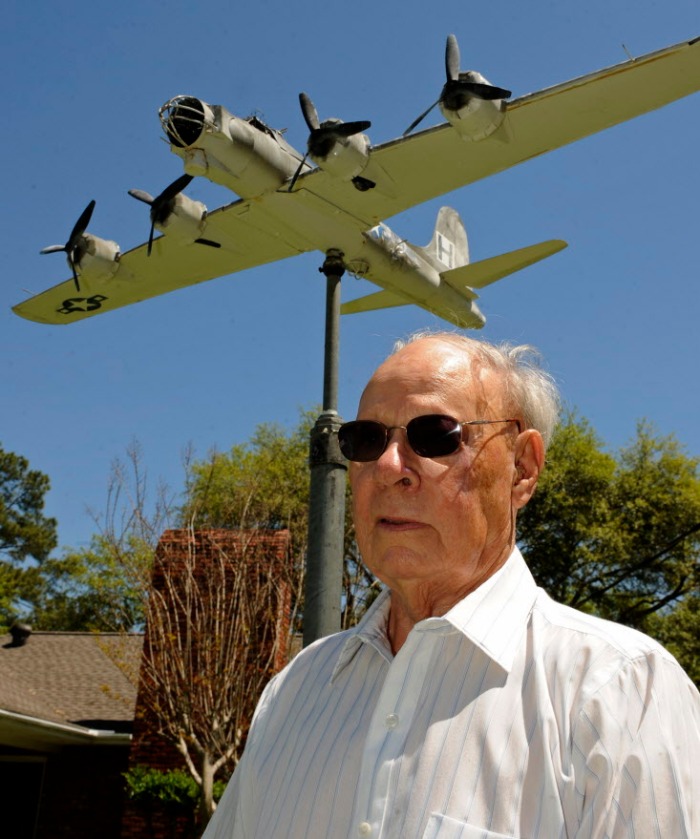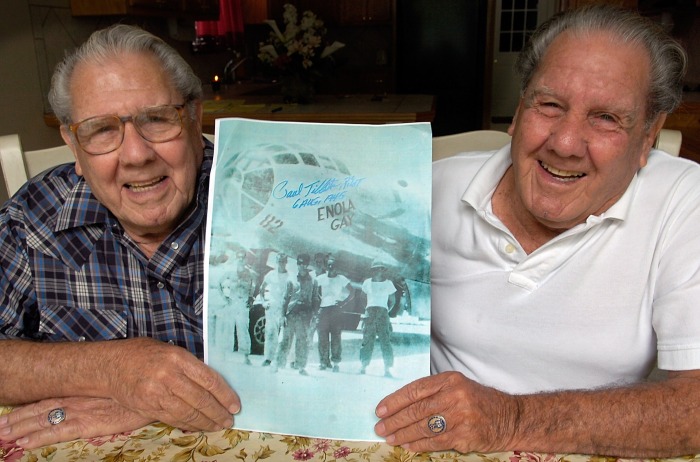 Carlton Hudson, who turned 100 on Jan. 26, shows a model of a B-24 in 2012. Hudson was shot down over Germany in 1944. (Photo by Travis Spradling, used by permission of The Advocate, Baton Rouge, Louisiana)
Carlton Hudson, who turned 100 on Jan. 26, shows a model of a B-24 in 2012. Hudson was shot down over Germany in 1944. (Photo by Travis Spradling, used by permission of The Advocate, Baton Rouge, Louisiana)
By George Morris
Carlton Hudson believes in guardian angels. If he’s right, his worked overtime during World War II. And it’s still going strong.
Hudson, a longtime Central resident who turned 100 on Jan. 26, didn’t get through the war unscathed. Shot down over Germany, he was wounded by rifle fire and spent seven months as a prisoner of war.
But, brushes with death were part of Hudson’s entire war experience, even before he faced the enemy.
Continue reading “Guardian angels working overtime for Carlton Hudson”
 Charles McGowan kept a B-17 wind indicator in his back yard. (Photo used by permission of The Advocate, Baton Rouge, Louisiana)
Charles McGowan kept a B-17 wind indicator in his back yard. (Photo used by permission of The Advocate, Baton Rouge, Louisiana) Don Menard shows a letter and gifts he received in 2004 from Vasily Bezugly, a Soviet soldier who helped liberate Menard at Stalag Luft 1 near the end of World War II in Europe. (Photo used by permission of The Advocate, Baton Rouge, Louisiana.)
Don Menard shows a letter and gifts he received in 2004 from Vasily Bezugly, a Soviet soldier who helped liberate Menard at Stalag Luft 1 near the end of World War II in Europe. (Photo used by permission of The Advocate, Baton Rouge, Louisiana.) American Waco CG-4A glider being towed in flight (National Archives)
American Waco CG-4A glider being towed in flight (National Archives) Stan Shaw holds a photo taken of him in a bomber cockpit during World War II. (Photo by Patrick Dennis, used by permission of The Advocate, Baton Rouge, Louisiana)
Stan Shaw holds a photo taken of him in a bomber cockpit during World War II. (Photo by Patrick Dennis, used by permission of The Advocate, Baton Rouge, Louisiana)
 Arthur W. Ward during flight training in World War II. (Photo provided by Deborah S. Ward)
Arthur W. Ward during flight training in World War II. (Photo provided by Deborah S. Ward)
 Paul Dietzel holds a photo of ‘Banana Boat,” the B-29 he piloted in bombing missions over Japan in World War II. (Photo by Bill Feig, used by permission of The Advocate, Baton Rouge, Louisiana)
Paul Dietzel holds a photo of ‘Banana Boat,” the B-29 he piloted in bombing missions over Japan in World War II. (Photo by Bill Feig, used by permission of The Advocate, Baton Rouge, Louisiana)